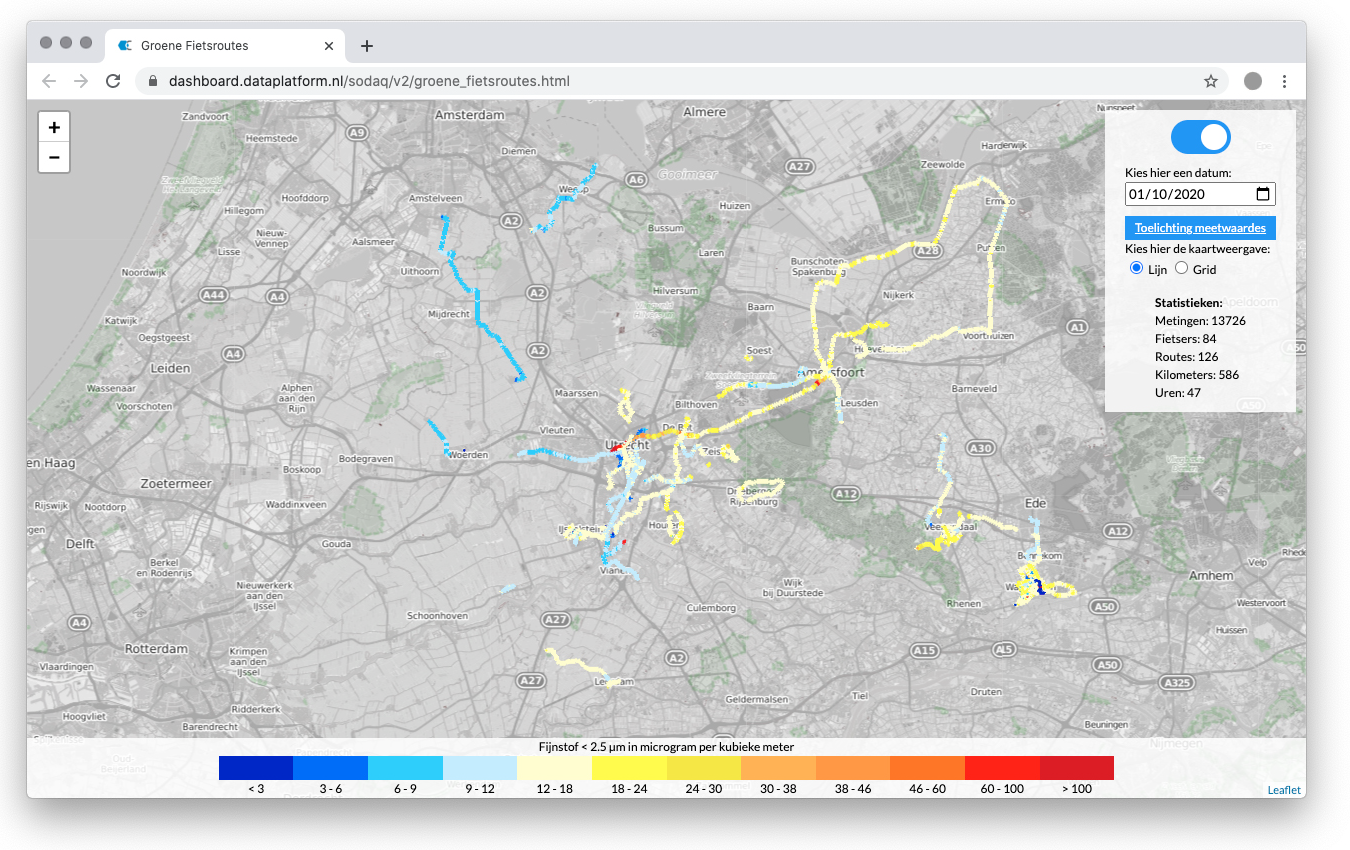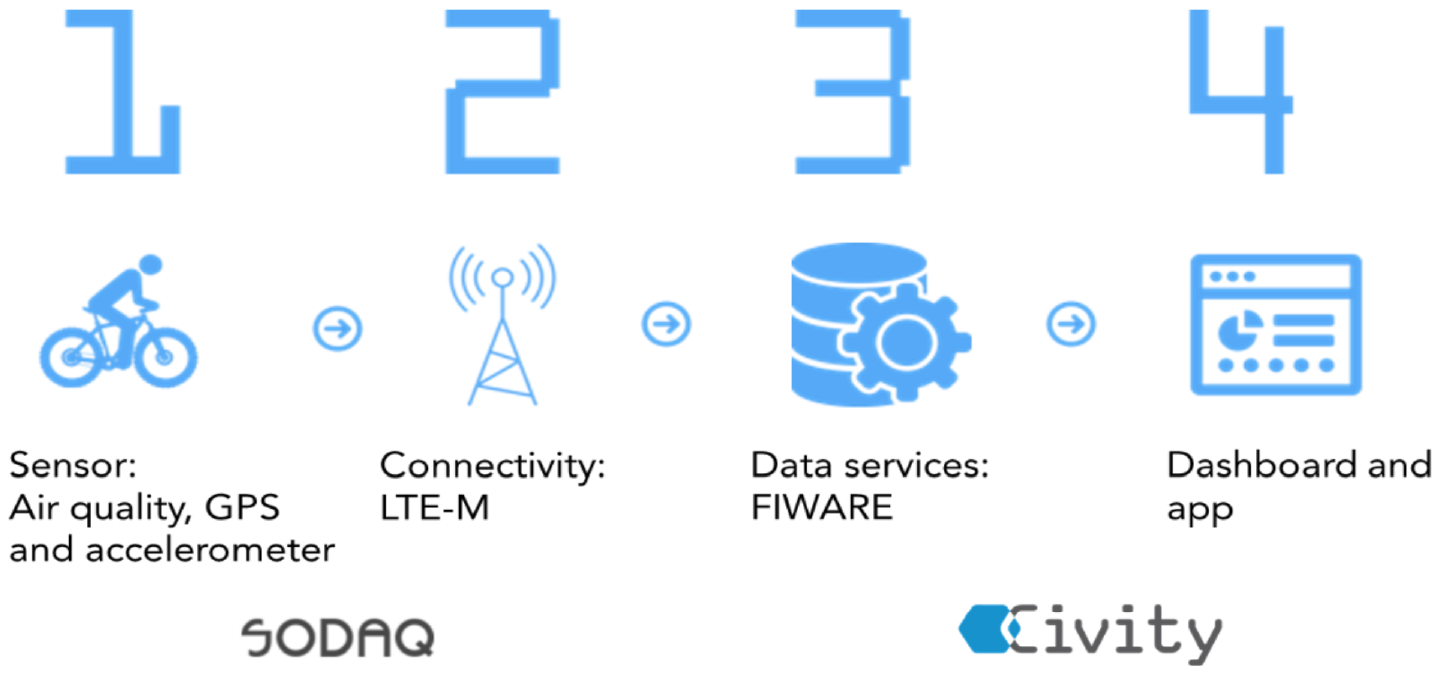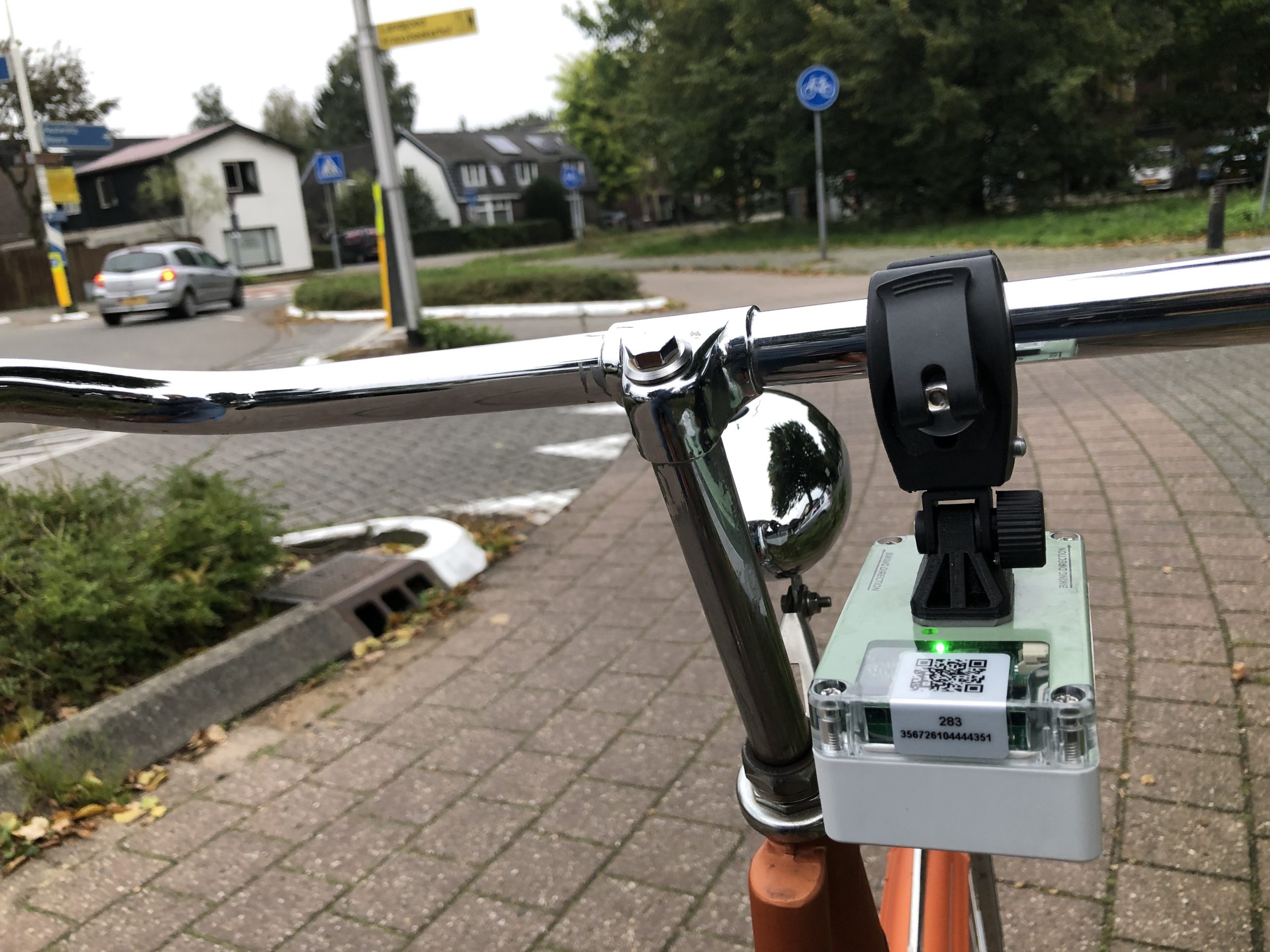Challenge & Context
By 2030, more than 80% of the Dutch population will live in urban areas. The development and maintenance of a healthy living environment are therefore of crucial importance for the health and well-being of the people. A healthy urban living environment also contributes to current social issues, such as the energy transition and a safe and sustainable food chain.
Our health is largely determined by environmental factors: where we live and work, what we eat, to what extent we are exposed to air pollution, what social interactions we have, and what lifestyle choices we make. It is estimated that 70% of these factors explain the development of chronic diseases, such as cardiovascular disease, diabetes, and cancer.
To get a better understanding of these environmental factors, data-driven (evidence-based) knowledge is essential. This requires a new way of working and collaboration between governments, businesses, knowledge institutions, and residents on the development of scientifically based, practical, and concrete products and services that have a positive effect on the health of residents.
One specific area that impacts healthy urban living is mobility and air pollution. We all know that air pollution is a serious and growing problem, causing environmental damage and health issues. Today, the air quality is mostly measured through static monitoring stations, resulting in limited insights on toxic pollutants in our environment. What if we could learn more about air quality, at any time, and there where means stimulating healthy transportation modes at the same time?
Although people in The Netherlands cycle a lot, there is a shortage in valuable and usable data about cycling compared to the available data about car traffic. The result is that cycling is often underexposed in mobility policies. At the same time we know that, for many people, a bicycle can be an attractive alternative that offers personal benefits as well. The growing attention for cycling, as we have been seeing it during the COVID-19 pandemic, can contribute to solutions for societal problems: not only mobility issues, but also air quality, public health, participation, and wellbeing. At the same time, the rise of electric bicycles, increased and varying speed, bicycle delivery services, or the usage of mobile technology on a bike, create new challenges for the existing infrastructure and for safety.
The province of Utrecht wants to be a leader with regard to cycle knowledge, data and tools. It wants to contribute to the further development of a positive cycling culture in The Netherlands. With this goal, the province of Utrecht started the Snifferbike experiment. The combination of new technology, open data, and active user engagement, encourages healthy behaviour, helps to shift the modal split, and contributes to a healthy living environment.
Solution
The Snifferbike project started in 2018 with a small pilot as a collaboration between the province of Utrecht, Civity, SODAQ and RIVM (the Dutch National Institute for Public Health and the Environment). In this pilot, cyclists were given sensors for their bikes (see version 1 of the sensor below). These sensors were used to collect data about air pollution and cycle routes. The Snifferbike sensor conducts anonymous tracking of cyclists to identify habits and determine where cycling infrastructure could be improved based on traffic patterns.
The pilot was notably successful: About 60 volunteers in the municipality of Zeist travelled about 8,000 km in five weeks. In the summer of 2019, it was scaled up to nearly 700 newly developed sensors (see version 2 of the sensor below). The province of Gelderland and the cities of Sittard-Geleen, Zwolle, Den Bosch, and Eersel joined, too. All participants were volunteers and together, they had with the Snifferbike Sensor, collected over 35 million data points within a period of 12 months (summer 2019 — summer 2020). The sensors measure particulate matters (PM), but also GPS-coordinates, Volatile Organic Compounds (VOCs), temperature, air pressure, humidity, and irregularities of the road (accelerometer).
A mobile application for citizens allows cyclists to track air quality and to choose healthier routes. A management dashboard also provides indispensable data on the current state of the environment, which is essential for policymakers tackling environmental and mobility issues, as well as for local research agencies, in order to create a healthy urban space for all.
Figure 1 . One day of data from Snifferbike with insight in routes and air quality
It’s all about the important goal of engaging citizens. From the start, all participants are actively involved. They have access to the open data, are invited to webinars and information sessions, and get regular updates about the results. The active involvement of many different stakeholders (citizens, research institutes, government agencies, students, delivery couriers, and many more) have made this project that successful. From the start, the ecosystem of people involved had been growing extraordinarily.
How it works
Snifferbike is a joint solution by SODAQ and Civity. SODAQ is responsible for the device (sensor) while Civity is responsible for collecting, storing and provisioning of data. To enable this, Civity has a platform (City Innovation Platform, based on FIWARE) and it is used for the Snifferbike solution. Civity is a generic platform that is also used for other projects (SCOREwater, IRIS). So, Civity is also a SME, providing the platform-part (and dashboard/app) in the Snifferbike solution.
Snifferbike sensors measure air quality and GPS-location every 10 seconds. The sensors have a SIM card and transmit their data (LTE-M) every two minutes from bike sensors to the “Civity FIWARE platform”. LTE-M is a low power wide area (LPWA) network technology that is available in most European countries nowadays for machine-to-machine communication. Therefore, the Civity FIWARE platform can easily receive data from any bike in an area with LTE-M coverage.
The schema below shows the different steps from the sensor to the dashboard. SODAQ (responsible for mobile sensors) and Civity (a provider of data-infrastructure and dashboards).
Figure 2 . Functionality
The central component of the Civity platform is the FIWARE Context Broker. It manages the consolidation of data from variousInternet of Things (IoT) devices — in this case the Snifferbike sensors — and contextualizes the data to form meaningful information. The Context Broker is based on the global FIWARE NGSI v2 API specifications. It is available as a digital building block to anyone aiming to develope high-quality services in a fast and easy manner. The Context Broker consists of open source royalty-free software components, documentation, reference implementations and support services, which are offered by the European Commission’s Connecting Europe Facility (CEF) programme.
Another FIWARE component that is used at Snifferbike, is Cygnus. Cygnus manages the historical context data, which is connected to CKAN to make the open data available for reuse. CKAN is the open data management platform (and also part of the FIWARE reference architecture) for the publication, management and the consumption of open data.
Before the sensor data is consolidated by the Context Broker, a custom NGSI connector made by Civity transforms the data to the right data model (FIWARE’s ‘Air Quality Observed’ data model). The Context Broker then receives data, checks values and shares updated information with all who have subscribed for updates.
Snifferbike data is also sent to RIVM, the Dutch National Institute for Public Health and the Environment. It gets compared to official, static measuring stations and calibrated accordingly.
Figure 3 . Architecture
Benefits & Impact
Currently, nearly 700 Snifferbike sensors are in use. Sensors can be shared among users, so the actual number of participants is higher. Through the community platform, all participating members are kept informed. There are different kinds of users, like elderly, students, wheelchairs, couriers, etc., and each of them may experience different benefits.
Benefits can be:
- Empowering cyclists to choose healthier routes;
- Helping individuals suffering from lung diseases to avoid certain levels of air pollution, as a well-known trigger;
- supports local and provincial policy makers and urban planners in making educated decisions based on new insights;
- Allowing research agencies and national monitoring institutions to collecting additional data and better understand air pollution;
- Supporting climate neutrality.
The objective is to extend the number of Snifferbikes and to develop new solutions on top of the data. In 2020, a large number of Dutch government agencies signed the Clean Air agreement. The ultimate goal of this agreement is to permanently improve air quality in The Netherlands and together with all stakeholders. Another goal is to achieve a health improvement of at least 50% in 2030 (compared to 2016), regarding domestic sources of air pollution. This means that Dutch people will live longer and healthier and achieve a higher quality of life. Snifferbike is a valuable tool to provide insights and help cities achieve their goals faster and with less capital invest.
New developments for Snifferbike are taking place through the newly founded Healthy Urban Living Data and Knowledge Hub. This Hub is a public-private collaboration between research institutes, government agencies and businesses. One of the action tacks is “Smart Monitoring”, building upon the (data of) Snifferbike.
Globe, a network of schools that offer nature and environmental lessons in collaboration with scientists, has developed teaching materials for secondary schools about Snifferbike. The fact that Snifferbike is becoming part of school programs increases engagement and awareness among young students.
Until August 2020, Snifferbike has collected almost 35 million data points. Participants have cycled almost 500,000 kilometres and spent 35,000 hours on their bikes. After the first days of Corona lockdown (March 2020), we saw a decline in car, bus or train commuting and an increase in (longer) recreational bike rides.
Snifferbike started as an experiment but has proven its value profoundly in the past years. For Civity, it is a valuable solution because it contributes to the citizens’ sustainable and collaborative goals. The community of participants has been growing since then, a lot of new ideas about extending the solution with new data, new user groups and new solutions have been introduced and the value of an open urban platform has been widely demonstrated. Snifferbike has proven that openness, collaboration and standardization lead to successful and sustainable solutions.
Added value through FIWARE
Civity has been using FIWARE components since 2016. Civity acted as a co-founder of the Dutch FIWARE Lab in 2017, which was renamed to The Future City Foundation in 2019 to reach a broader group of urban planners, developers, researchers and civil servants.
Besides Snifferbike, Civity also offers FIWARE solutions for civic engagements, EV-stations, water quality and disabled parking spots. Civity is proud that the FIWARE-based platform also gives the foundation for 2 EU-projects (IRIS and SCOREwater). The IRIS-project is about energy transition (housing, mobility) while the SCOREwater project is about climate adaptation and sustainable water management. In both projects the development of an open marketplace is an important deliverable. The staff of Civity have proven that we can connect multiple different data sources and make them available for new smart city solutions.
“FIWARE is the right technology for all of our projects. It is open source and it focuses on standards. That is a prerequisite, because the development and maintenance of cities involve more and more stakeholders and concern many interrelated topics: energy transition, mobility, climate adaptation, health, to mention but a few. Collaboration is needed to achieve all the challenging goals. Civity believes that this is only possible through open collaboration, sharing of knowledge and the use of standards. That is what FIWARE does.”
Next Steps
Many national and international organisations have shown their interest in Snifferbike and healthy urban environments. The positive feedbacks received is used by SODAQ to develop a new version of the Snifferbike sensor (see version 3 below), in collaboration with students from the Technical University of Delft. It is smaller and more versatile and can be used as a static sensor, too.
Figure 4 . Snifferbike evolution and next generation
Another group of students developed further ideas for Snifferbike during a 2020 Summer School. The winning idea will be developed further with a focus on the involvement of companies that provide delivery and maintenance services with (electric) bikes. As cities impose more regulations on car traffic and introduce environmental zones for their inner cities, it becomes more attractive (often also economically) and quicker to use electric cargo bikes for such purposes. Those user groups cycling regularly, can provide valuable data on air quality and road usage patterns.
Figure 5 . Next Steps
The goal is to develop Snifferbike as a comprehensive solution for smart monitoring of cycle routes and environmental conditions. Combinations with other relevant data sources (weather, greenery, traffic, etc.) contribute to that. Having a generic, open FIWARE platform is the preferred enabler to achieve this goal. The solutions and standards offered by FIWARE make it easier to connect to other sources and create a federative, secure network of platforms.
References
- LinkedIn Snifferbike
- Snifferbike website
- Summerschool (Aug 2020) Healthiest Region
- CEF-publication Snifferbike
- Nature Today: Snuffelfiets: inwoners provincie Utrecht zetten luchtkwaliteit op de kaart
- Trouw (national newspaper): Fietsers in Utrecht zoeken naar fijnstof met een snuffelfiets
- Atlas Leefomgeving
- AD (national newspaper)
- RTV Utrecht (with film)






